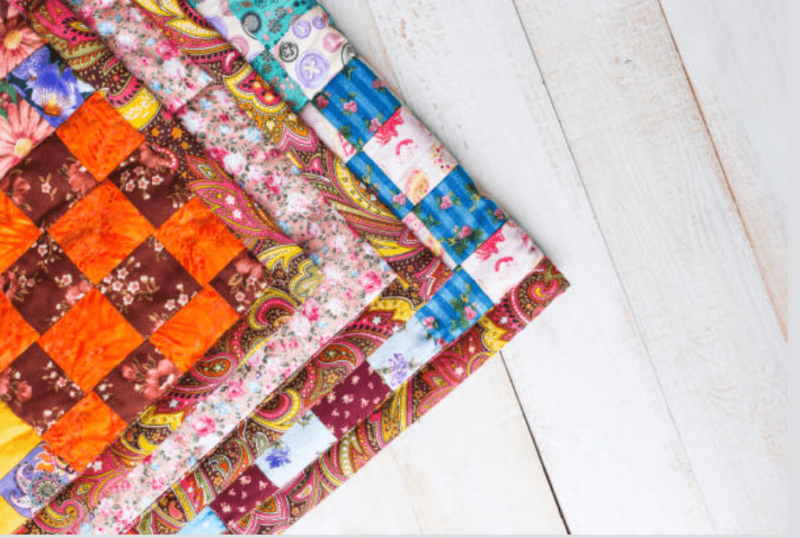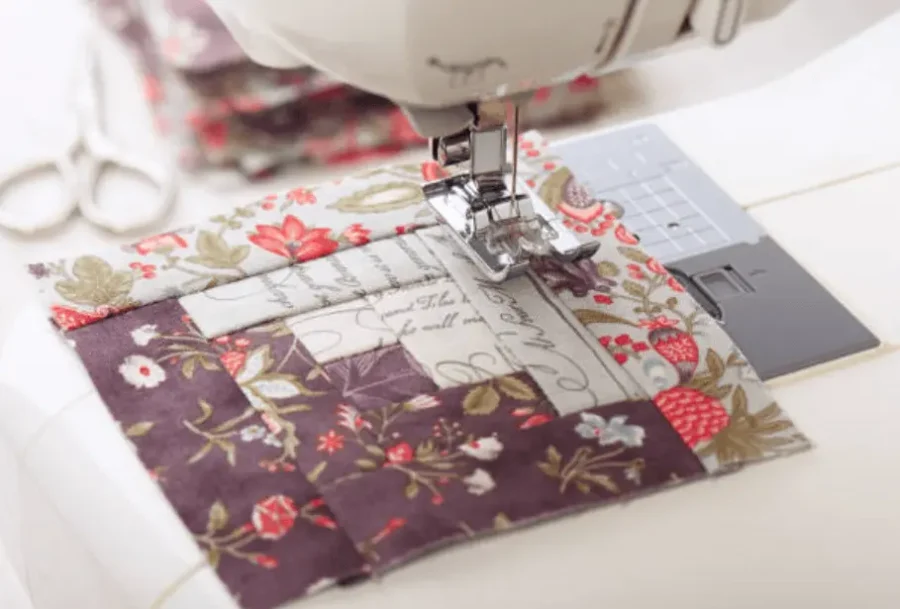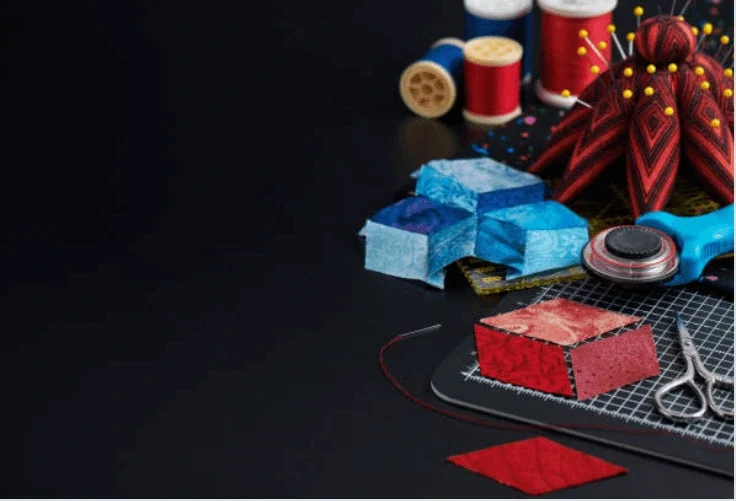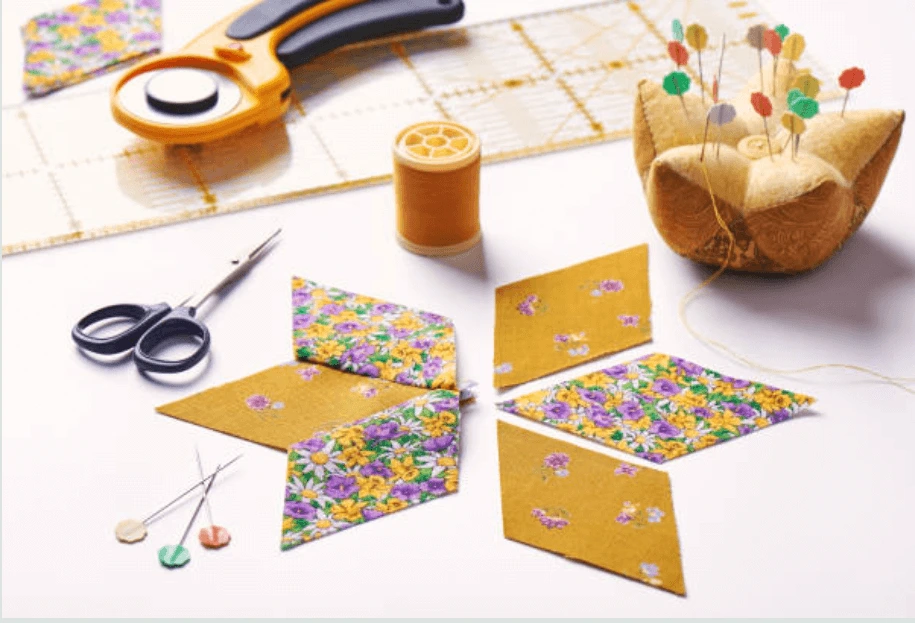Hand-quilting has been around for years and is still popular even today. While there are many machines designed to do this work for us, there are also those who enjoy the art of hand-quilting and continue to do it by hand despite being able to use other methods. It is not difficult by any means, but mastering some basic techniques will help make your work go faster and look better in the end. You don’t need to buy expensive equipment to enjoy hand quilting. In fact, most quilters started with very basic tools. You’ll be surprised how much you can do with a needle, thread, and some batting in the palm of your hand.
Before you start, you will need to have some batting, fabric and thread on hand. You will also need some kind of quilting frame or pad to frame the batting. Quilting frames can be bought cheaply, or you can make your own, depending on what you have on hand.

Hand Quilting – Techniques
The basic hand quilting technique that you’ll use is straight stitching. This is used to hold your raw edge together, as well as the quilt itself.
Thread your needle and tie a knot at the end to prevent it from being pulled out.
Fold the batting in half, lengthwise.
Place the folded batting on the back of the quilt.
Place your fabric in front of you, with the right side up.
Line up the end of your thread along the top edge of the fabric.
Bring the needle to the front of the fabric.
Catch the thread at the back of the fabric, and pull the needle all the way through.
Bring the needle to the front again, about one inch away.
Bring the needle up through the top edge of the fabric, catching the thread again.
Bring the needle back towards the front of the quilting, catching the thread again. Continue stitching in this manner, moving slowly, making sure to catch each thread.

Make sure to stop at a 45-degree angle.
Take the needle across the top of the fabric, back towards the first stitch line, catching the thread again.
Bring the needle back towards the front of the work , catching the thread one more time. Tie off the knot, and trim the threads close to the knot. Do not pull the threads tight, as they will tangle. Bring the needle up through the first stitch line. Continue stitching in this manner until you have quilted all the way around the quilt. Close the quilting frame, and push the quilt into the frame. Support the batting as you work. Always push the batting into the frame, rather than pulling it.

Move the quilt back and forth across the frame as you are stitching. As you stitch along the quilting, carefully pull the fabric away from the batting. Once all the stitching has been done, carefully pull the fabric away from the batting. Trim away the excess batting, and ruffle the edges.
Hand quilting can also be used as a decorative element. Quilts can be made with many different stitches, and different fabrics. If you attempt to do too much, it can get complicated, so stick with a few basic stitches.
Hand quilting can be a relaxing hobby, or it can be a way to express yourself creatively. Whatever reason you have for doing it, it’s a great way to spend your free time, and a great way to make a one-of-a-kind quilt to enjoy for years to come.
Complete Guide To Getting Started With Machine And Hand quilting
The quilting machine is an important part of the sewing process, and it is important to have a good understanding of how to use one before beginning a project. This guide will provide a basic overview of how to use a quilting machine, as well as some tips and tricks to help you get the most out of your quilting experience.

Does quilt binding have to be cut on the bias?
No, quilt binding does not have to be cut on the bias. It can be cut on the straight of grain or on the bias, depending on the look you want to achieve.
Choosing a Quilting Design
There are many quilting designs to choose from, and the decision can be tough. However, there are a few things you can keep in mind to help you choose the right design for your quilt. First, think about the overall look you want for your quilt. Do you want it to be traditional or modern? Second, consider the colors you want to use. What color scheme do you envision for your quilt? Finally, think about the level of difficulty you are willing to tackle. Some designs are more complex than others and will take more time to complete. By keeping these factors in mind, you can narrow down your choices and find the perfect quilting design for your next project.
How to quilt as you go
To quilt as you go, start by sewing a strip of fabric to the top of your quilt. Then, stitch a line of quilting along the strip of fabric. Continue adding strips of fabric and stitching lines of quilting until your quilt is complete. When you’re finished, trim any excess fabric from the edges and bind your quilt with a coordinating binding.
Now that sewing machines are widely available for under $100, and quilting fabrics are available in every hobby store, people everywhere are exploring their love of quilting. Quilting can be as simple or as complicated as you want it to be, depending on your time, budget, and skill level. But one thing is for sure, quilting can be quite addictive, and once you get the bug, you’re hooked. I wanted to take a moment to share with you how to get started, as there are so many options available. I’ll also take some time to review some of the tools available, review the different types of stitches, and share some tips for beginners.
Before you can get started, you’ll need to figure out what kind of quilts you want to make, which will help you figure out what kind of fabric you’ll need. When shopping for fabric, there is a wide variety of options available. Here are some things you’ll want to consider: Make sure you don’t make the mistake of buying more than you need, though, as it’s a waste of money. If you know that you don’t like to sew with small pieces of fabric, you’ll want to look for larger pieces. Fill out your “quilting wish list”
Money-Saving Tips for Quilters
There are many ways to save money when quilting, and it often comes down to being mindful of the fabrics and materials you use. One way to save money is to purchase fabric in bulk, which can often be found at discount stores or online. Another way to save money is to reuse fabrics from old clothes or other projects. Additionally, you can look for sales and coupons when purchasing fabrics and supplies. Finally, consider making your own quilt patterns rather than purchasing them, as this can also help you save money in the long run.
Starting Hand-Quilting Stitches
There are a few different ways to start hand-quilting stitches, and the method you choose will likely depend on the overall look you want for your quilt. If you want an invisible start, you can use a blind stitch or a knotless stitch. If you don’t mind your stitches being visible, you can use a running stitch or a backstitch. Whichever method you choose, be sure to practice first on a scrap piece of fabric to get the hang of it before starting on your quilt.

How to Make a Patchwork Quilt by Hand
To make a patchwork quilt by hand, you will need a variety of fabrics in different colors and patterns, a sewing machine, and a lot of patience! First, you will need to cut the fabric into squares or other shapes. Then, you will need to sew the pieces of fabric together into a larger piece. Once you have sewn all the pieces together, you will need to quilt the top. This involves sewing a design onto the quilt top using a needle and thread. Finally, you will need to bind the edges of the quilt with fabric or bias tape.
Basic Quilting Tools & Notions
Quilting is a fun and rewarding hobby, but it does require some basic tools and supplies. Here is a list of must-have quilting tools and notions:
-A good quality sewing machine that can handle quilting projects.
-A rotary cutter and mat for cutting fabric accurately.
-A variety of quilting needles for your sewing machine.
-Thread in various colors to match your fabrics.
-Basic quilting templates and rulers.
-An iron and ironing board.
With these basic quilting tools and supplies, you will be well on your way to creating beautiful quilts!

Making A Quilt Sandwich
A quilt sandwich is made by placing a layer of batting between two layers of fabric. The three layers are then held together with quilting stitches. A quilt sandwich can be made using any type of fabric, but quilters often use cotton because it is easy to work with.
How to Quilt on a Budget
Quilting can be a fun and rewarding hobby, but it can also be expensive. If you’re on a budget, there are a few ways you can save money while still enjoying the process.
First, consider making quilts from recycled materials. Old clothes, sheets, and even tablecloths can make great quilt tops. You can also check thrift stores for fabric deals.
Second, use simple designs and patterns. Complicated patterns require more fabric and take more time to complete. Stick to straightforward designs to save both money and time.
Finally, don’t be afraid to experiment. Quilting is a great way to use up scraps of fabric you have left over from other projects. It’s also a perfect opportunity to try new techniques without investing in a lot of expensive materials.
The Complete Guide To Quilting: An Introductory Section Covering All The Basics Of Quilting: Starting With Simple Quilting Designs For Early Success (Paperback)
The Complete Guide To Quilting: An Introductory Section Covering All The Basics Of Quilting: Starting With Simple Quilting Designs For Early Success (Paperback) is a great guide for those who want to start quilting. It covers all the basics of quilting, from simple designs to more complex ones. This book is perfect for those who are just starting out, as it will help them get a feel for the different techniques and materials involved in quilting.
How to use quilting stencils
To use quilting stencils, first trace the design onto tracing paper. Then cut out the design, leaving a slight border around the outside. Next, place the stencil on the fabric and secure it in place with tape. Finally, use a pencil or chalk to trace the design onto the fabric.

